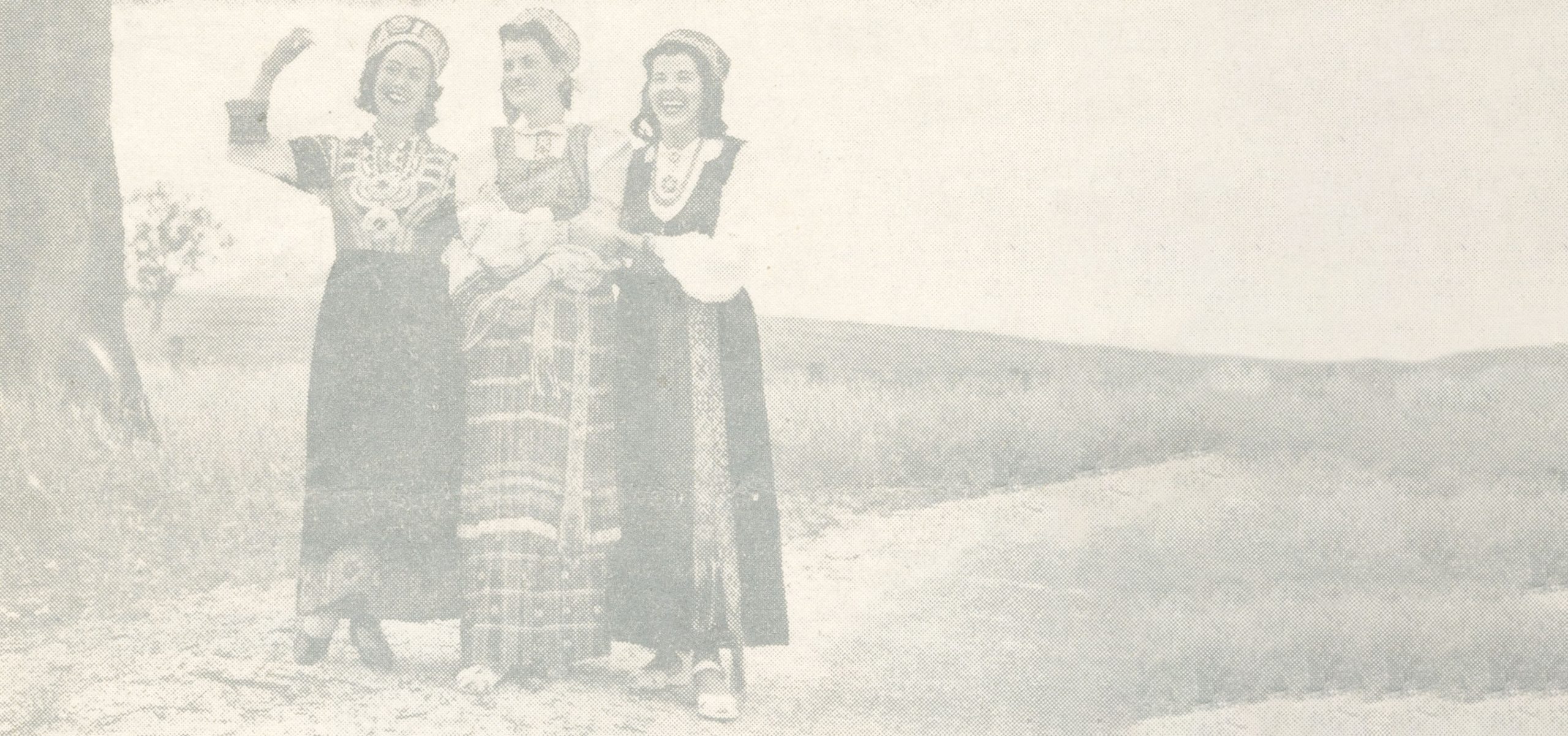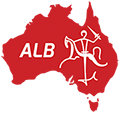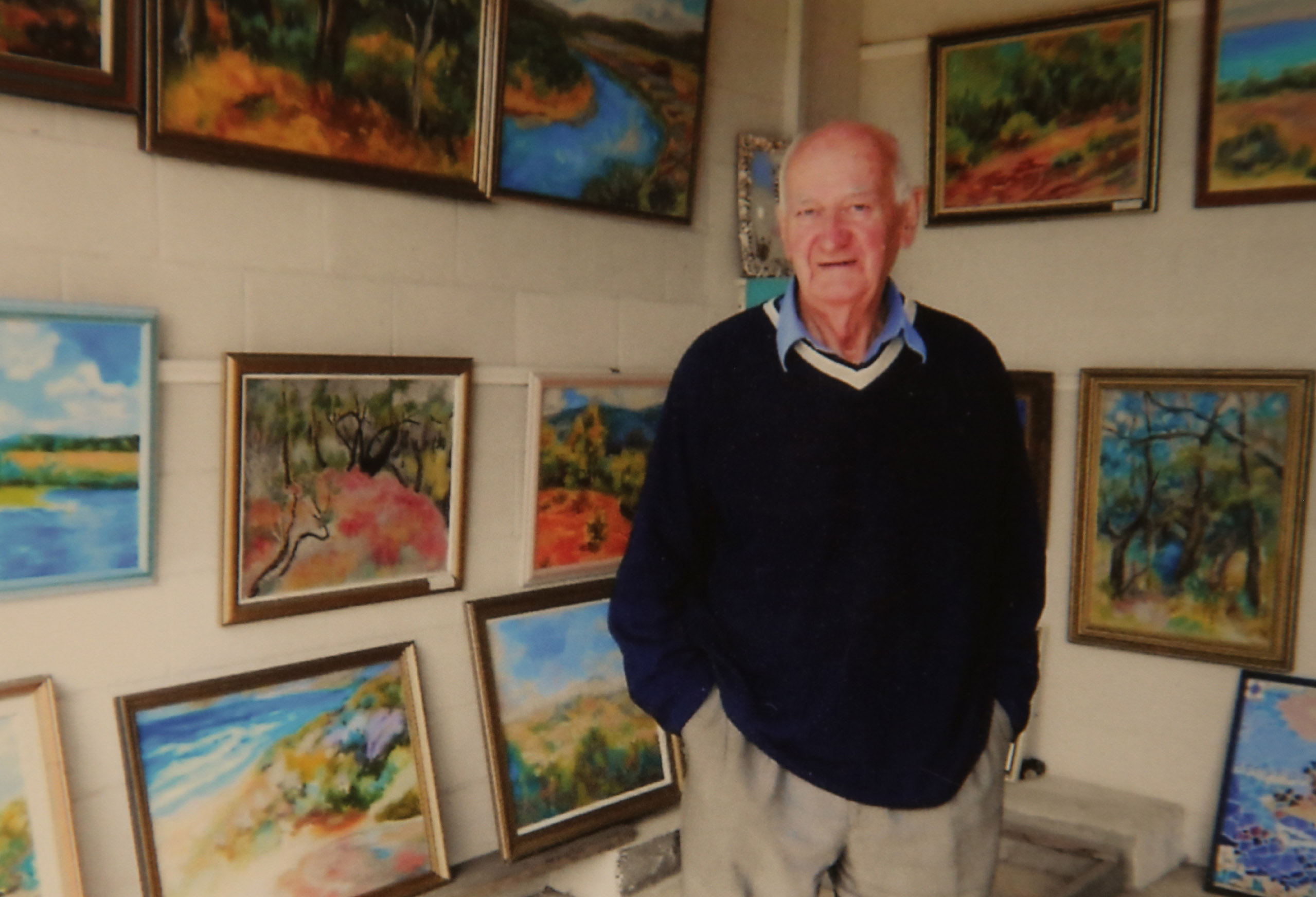Born in 1924, Pranas Repšys grew up during “independence times”, with a strong sense of pride in national culture and democratic values. His experience of childhood on a prosperous farm in the north east of Lithuania gave his creative talents expression in making and building with his uncle, and the occupation years taught him to improvise. The beauty of the forest, rivers and lakes which surrounded the family farm gave him a deep love of the natural world.
He developed his artistic talents during the four years which he spent in the displaced persons’ camp in Frieberg where he studied painting at the art school which older Lithuanian refugee artists and craftsmen had set up in the camp. Some of those refugees also migrated to Australia and remained his friends – some in Melbourne, most in Sydney.
While he was in Frieberg, he had the intention of pursuing a career in art. He claimed that he was refused sponsorship to Venezuela because he wrote in his visa application “artist” as his occupation.
A photo taken at the Mt Moriac work camp by his photographer friend, Viktor Pranckunas shows Pranas about to set out on a ‘plein air’ painting excursion. However his family responsibilities made him turn to accounting as a more reliable way of earning a living, so it was not until he moved to Lower Plenty, that he was able to indulge in artistic pursuits. There he met and was befriended by Lindsay Edward, head of painting at RMIT, David Newbury, head of art at Melbourne Teachers’ College and David Keys, owner of Art Spectrum.
Pranas quickly became involved with the the artistic community and the cultural life of the Eltham district. He learned pottery, and built himself a kiln and potting shed, as well as starting painting again. He also volunteered to be treasurer of Eltham Little Theatre. He didn’t resume painting seriously until he had separated from his wife and moved to StKilda.
Throughout all this time, he remained in contact with Viktor Simankevičius in Melbourne and Henry Šalkaukas in Sydney. While in StKilda, he renewed his acquaintance with the sculptor, Juozas Zikaras, and rejoined the Lithuanian Club in Melbourne. This enabled him to begin to connect with the Lithuanian artistic community in Melbourne.
He started painting again when he and his partner built a holiday house at Aireys Inlet, and he had left Ford Motor Coy and joined David Keys at Art Spectrum. From 1987 onwards through most of the 1990’s he joined David Newbury, David Keys and others on ‘plein air’ painting excursions on most weekends. While he continued painting until about 2013, the canvasses which he produced
with the 2 David’s are his best. It is interesting to compare his paintings with those of David Newbury of the same subject, particularly how each artist saw the colour green.
While at Aireys, he also dabbled in mosaics and using found objects – driftwood, shells, leaves and other ‘stuff’ – to create sculptures and wall decorations. He entered his works in local art shows on the Surfcoast and in Geelong, but didn’t enjoy great commercial success. Pranas’ works are held by his Estate.





















